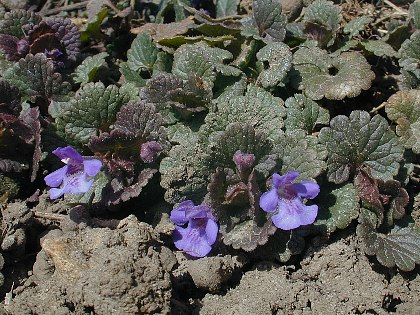Flower EncyclopediaENTER THE WORLD OF FLOWERS |
Other News
Flowers and soil
Category: Specialist advice
20 Jun : 17:09
To view pictures click on them
 The choice of soil is vital for growing staynitsvetya because the nature of the root system razteniyata available in a large space in the pot while we have much less ground.
The choice of soil is vital for growing staynitsvetya because the nature of the root system razteniyata available in a large space in the pot while we have much less ground.Why garden soil is not suitable?
Ordinary garden soil is not suitable because it often contains residues of fertilizers and herbicides and / or infected with pests and microorganisms, which are home to breed. Irrigation in this soil is rapidly destroyed.
Why are preferred finished soils?
For indoor rearing razteniya use special soil mixtures, albeit in most cases are universal, but are offered specially prepared for certain groups of plants. In soils finished sharply reduce failures in growing plants because they are sterile and contain all the substances. Mixtures are preferred, albeit sold in major centers. Otherwise you may encounter a very poor product.
Chimovka:
Chimovkata is very nutritious. Contains humus, an ingredient that is missing in all other components. The beauty of humus that retain moisture and makes the soil more porous. Chimovka containing mixtures are better than those of the peat base. Produced in a decaying meadow turf facing down on the grass with.
In practice, small amounts can get from the surface 10 cm layer of lawns (clover very desirable) iztraskvate it from the roots of grass and then sifted.
For chimovka can be used soil collected from places where nettle grows. It is very fertile and has a pH close to neutral. Collected in the spring or early summer.
As prepared, screened and food chimovka can be used and a ring of molehill.
In its pure form is used to chimovkata little razteniya - dratseni, palms and citrus. In most cases uchastvav composition of many soil mixtures and the quantity varies from 10-15% to 55-60%.
Greenhouse earth:
Greenhouse soil is completely decomposed, used to heat greenhouses manure and bulk finger on it, which is grown seedlings. Greenhouse soil is stored in heaps, as compost, and then short-lived time is ready for use. It improves the physicochemical properties of soil mixtures and can be used for fertilizing the open areas.
Wood dust.
The wood dust is derived from decayed tree stumps stems, twigs, sawdust and rotten inside of the hollow of old trees. By its nature it is close to the leaflet, but is used less frequently because it is prone to acidification. It is suitable for growing orchids and ferns, and representatives of the family Bromelievi.
Package:
PH 5-6. Collected from the soil layer is not thicker than 5 cm in beech, birch and hornbeam and sieved to separate fallen lumps, pebbles and twigs. Leaflet of willow, oak, chestnut and walnut is not used for the content of substances that inhibit growth. Pine leaflet was collected in the same way soil but under conifers. It is acidic and is appropriate for acidophilic plants. Leaflet supports loose soil mixtures. Is poorer in nutrients than chimovkata, but is much more loose and easily absorbed by plants.
Used for sowing small seeds, as well as on the soil mixture for growing cyclamen, primula, cineraria, gloksinii, begonias, epistsii, ferns and others.
Erikova finger.
Erikovata finger is very light, loose and rich in nutrients. Produced by the decaying of some alpine plants of the family Erikovi. Since it gets difficult but it is very expensive.
May be replaced completely with a mixture of 4 parts peat soil, 2 parts of this leaflet and 1 part sand.
Pine bark.
The pine bark is a waste product from the logging and wood processing industry. Consist not only from the bark of pine trunks, and a thick cork layer of older trees. They are an important source of humus to the soil, the more that fresh pine bark have long posledeystvie, due to their slow decomposition.
Participate pine bark as an ingredient in the preparation of soil mixes for growing some ornamental plants, but use a tiny fraction of them. It must be borne in mind that fresh pine bark and connect the available nitrogen can be obtained under nitrogen starvation grown plants. Therefore, recommending a fresh pine bark to be composted for 6 - 8 months before use.
Peat soil:
Light, loose and vlagoemka rich humus soil. In peat mixes easily provides a balanced mineral nutrition of flowers. Produced by the dark turf, which is added to manure and lime.
In its pure form this soil is used for the cultivation of violets, senmpolii, strentokarpusi. Acid reaction and there is a particularly important component of soil mixture kamelii, azalea, orchids, ferns and hydrangea. It is suitable for sowing small seeds and rooting of cuttings.
Peat turf soil mix made in loose and sandy to light density and gives vlagoemnost.
Perlite.
Perlite is a white spongy granules of different sizes. It is obtained by calcination at 1100 ° C of eruptive rock which occurs in our country (in the Eastern Rhodopes). In this firing the crystalline water is separated and formed pores.
Perlite is very light and is used for some lighter elements in construction. In tsvetoproizvodstvoto be used as an ingredient of soil mixtures for rooting of shteklingi and improve the physical properties of heavy soils.
River sand.
The river sand is important in preparing the soil mixtures, as makes them loose. Preferably clean washed coarse-grained fluvial sand. It can be used to improve the physical properties of heavy soils.
Why soil mixtures are added moss?
To give greater rohkavost slightly and hygroscopicity of the soil, it is added to white marsh moss (sfagnum), who advance protriva through a sieve. Such soil mixtures used for the growth of large seeds (the seeds of the muse and other tropical plants) in forsazha of lily of the valley and in the cultivation of orchids.
Why soil mixtures are added crushed charcoal?
Often soil mixtures to be added in small quantities of crushed charcoal. They absorb excess moisture from the soil, then a lack of moisture in it give, and thus protect the soil from acidification.
From here all of the above types of soil and substrates in the pure state using only leaflet erikovata and peat soil - for sowing small seeds (begonia, gloxinia, etc..) - And the sand and perlite - for rooting of cuttings of certain species of flowers.
Soil mixtures, necessary for the cultivation of ornamental flowers, must meet the following conditions: usvoyaemi contain nutrients necessary for plant quantities, can not retain excess water for irrigation, to admit air to the roots of the plant, have a reaction (pH) plant as required, to be decontaminated.
When preparing soil mixtures must be taken into account before all the requirements of the species, which is prepared mixture. It is no exaggeration, to say that almost any kind should be made a special soil mixture. In practice, however, is not so, since it is impossible to be studied to greater detail the requirements of different types of flowers in terms of soil mixture.
Three types of soil mixtures.
Adopted is similar in requirements to group plants and to make three types of soil mixtures: severe, moderate and mild.
Composition of soil mixtures.
Severe soil mixture is made of 3 parts severe turf toe, 1 part soil or greenhouse leaflet and 1 part river sand.
Moderate soil mixture is made from 2 parts severe turf toe, 2 parts leaflet erikova peat or soil, 2 parts greenhouse soil and 1 part river sand.
Light soil mixture is made from 1 part heavy turf toe, 3 parts of this leaflet and 1 part river sand.
Category: Specialist advice
Comments are turned off for this item0
| soil mixtures greenhouse earth garden soil growing plants surface 10 |
You must be logged in to make comments on this site - please log in, or if you are not registered click here to signup























































